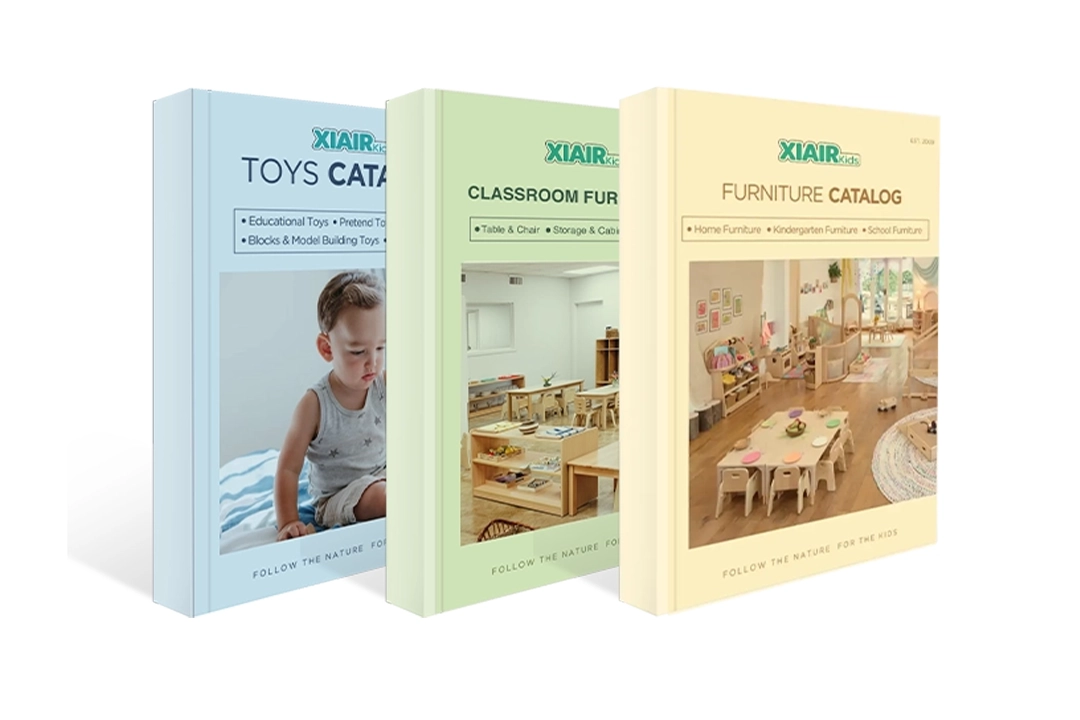Why does one child grasp new ideas quickly while another struggles with simple concepts? How can parents and teachers tell if a child is developing at a healthy pace cognitively? These questions often arise when observing young children grow, play, and learn. Understanding cognitive development in early childhood is essential, yet many caregivers feel overwhelmed or unsure about what to expect and how to support it. Without the proper knowledge, early signs of developmental delays may go unnoticed, and enrichment opportunities may be missed.
Cognitive development refers to the process by which young children acquire knowledge, think, learn, and problem-solve. It includes key mental abilities such as memory, attention, language, and reasoning. By understanding the stages and components of cognitive development, parents and teachers can identify critical milestones and tailor their interactions to support each child’s mental growth.
Whether you’re a concerned parent, a dedicated educator, or simply curious about how young minds grow, this comprehensive guide on cognitive development in early childhood is your trusted resource. Keep reading to discover how to spot developmental progress, engage children in meaningful ways, and foster a rich learning environment that supports their full potential.

What Is Cognitive Development?
Cognitive development refers to the gradual and dynamic process through which children acquire the ability to think, explore, and figure things out. It’s not just about learning facts; it’s about developing a deeper understanding of the world, forming concepts, solving problems, remembering experiences, and making decisions. In essence, it’s how a child’s brain grows to support thinking and learning throughout life.
Cognitive developmental journey begins at birth and continues through adolescence, though the early years—especially ages 0 to 5—are marked by rapid changes and critical milestones. Jean Piaget, a pioneering developmental psychologist, described cognitive development as a series of stages, each characterized by distinct ways of thinking and learning. From the sensory and motor experiences of infancy to the logical thinking that emerges in the school years, each phase builds upon the previous one, shaping a child’s intellectual and emotional life.
But cognitive development isn’t isolated from the rest of a child’s growth. It’s intertwined with physical development, emotional regulation, and social interactions. A toddler’s ability to learn new words, for example, depends not only on brain maturation but also on engaging environments and responsive caregivers. Likewise, problem-solving skills often develop during play, where children explore, imitate, and experiment.
Parents and educators play a critical role here. By providing stimulating experiences—like reading, storytelling, puzzles, and conversations—they can create an environment that fuels curiosity and encourages mental growth. Observing how a child interacts with the world offers insights into their cognitive strengths and areas that may need extra support.
Understanding cognitive development is the foundation for everything that follows. It sets the stage for identifying delays, fostering strengths, and knowing how best to support young learners as they explore, ask questions, and expand their thinking every day.
Examples of Cognitive Skills
Cognitive development encompasses a wide range of mental abilities that help children process information, make decisions, and understand their world. These skills work together and evolve as children grow, forming the foundation for learning, behavior, and problem-solving. Below are some of the most essential cognitive skills developed during early childhood:
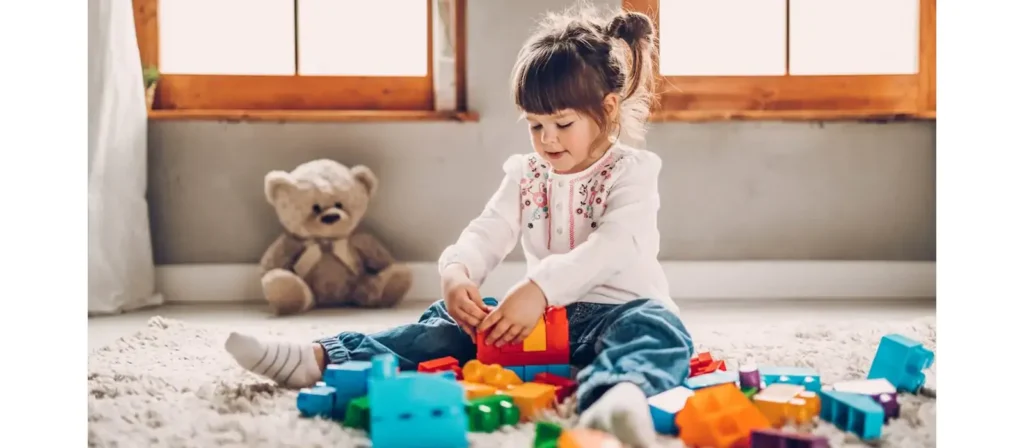
- Attention:
The ability to focus on a task or object for a period of time is crucial for learning. Young children gradually improve their capacity to concentrate, tune out distractions, and shift focus as needed. For example, a child learning to listen to a story or follow multi-step instructions is using and strengthening their attention skills. - Memory
Memory enables children to retain and recall information. Short-term memory helps them remember what was just said, while long-term memory allows them to store experiences, vocabulary, and facts over time. Playing memory games or recalling past events strengthens this ability. - Perception
Perception allows children to interpret the world through their senses. Visual perception helps them recognize shapes, colors, and letters, while auditory perception aids in distinguishing sounds and spoken words. These skills are critical for tasks like reading and spatial awareness. - Imitation
One of the earliest cognitive skills, imitation enables children to learn by observing and copying others’ actions, sounds, and behaviors. It supports language development, social learning, and motor skill acquisition. Through imitation, children absorb cultural norms, emotional expressions, and everyday routines long before they understand them conceptually. - Language Processing
This involves both understanding and using language. Children learn to recognize words, form sentences, follow conversations, and express ideas. Strong language processing supports communication and is directly tied to literacy and academic achievement. - حل المشكلات
Problem-solving is the skill of identifying an issue and finding a way to resolve it. Whether figuring out how to build a taller tower of blocks or deciding how to share toys fairly, children use logic, creativity, and reasoning—all core aspects of cognitive development. - Logical Reasoning
This skill helps children make sense of cause and effect, categorize objects, and understand relationships. For instance, recognizing that plants need water to grow or sorting toys by color requires logical thought. - Processing Speed
Processing speed is how quickly a child can take in information and respond appropriately. Faster processing makes it easier to keep up with instructions, participate in conversations, and complete tasks efficiently. - Executive Function
Often called the “control center” of the brain, executive function includes skills like planning, self-control, organization, and flexible thinking. These abilities are essential for goal-setting, adapting to new rules, and managing emotions. - Cognitive Flexibility
This is the ability to shift thinking in response to new rules or changing environments. For example, a child who can switch from sorting by color to sorting by shape demonstrates cognitive flexibility. It supports adaptability in classroom tasks and real-life problem-solving. - Inhibitory Control
This refers to the ability to resist impulses and distractions. A child with strong inhibitory control can wait their turn, follow rules, or avoid shouting out answers impulsively. It’s a crucial part of self-regulation and school readiness. - Metacognition
Metacognition means “thinking about thinking.” It includes self-awareness of one’s thought processes, such as realizing when you don’t understand something and deciding to ask for help. Even young children begin to show early forms of this skill as they reflect on their learning experiences. - Visual-spatial Processing
This skill involves understanding where objects are in space and how they relate to each other. It’s vital for tasks like puzzles, navigating environments, and even handwriting. Children with strong visual-spatial skills often excel in building, drawing, or geometry. - Numerical Cognition
This is the brain’s ability to understand numbers, quantity, and basic math concepts. Before learning arithmetic formally, many children show an intuitive sense of “more” vs “less” or can subitize (instantly recognize small quantities without counting).
Importance of Cognitive Development in Early Childhood
Early childhood is a critical window for cognitive development. During the first five years of life, a child’s brain undergoes rapid growth, forming millions of neural connections that lay the foundation for lifelong learning. Understanding why cognitive development is so important at this stage helps parents and educators make informed decisions that can positively impact a child’s future.
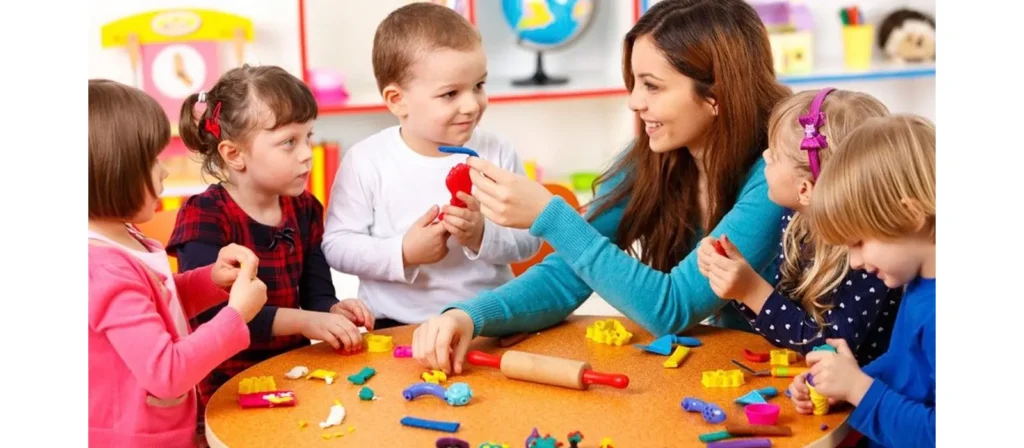
يدعم الاستعداد الأكاديمي
Cognitive development equips children with the skills necessary for success in school, such as attention control, memory, language acquisition, and reasoning. These foundational abilities enable children to understand instructions, follow routines, and grasp complex concepts. Activities like story reading, counting games, and creative play all nurture this readiness, ensuring children start school with confidence and competence.
Strengthens Problem-solving Skills
Young children encounter challenges daily, whether it’s stacking blocks or resolving a conflict during play. Strong cognitive development allows them to think through problems, consider solutions, and make decisions. These problem-solving skills are essential not just in academics, but in daily life as well, building independence and logical reasoning from an early age.
Enhances Language and Communication
Language is a core component of cognition. As children’s brains develop, so does their ability to understand and use language effectively. This growth impacts how they express needs, ask questions, and engage in conversations. A strong cognitive foundation fosters vocabulary expansion, sentence formation, and storytelling, which in turn enhances social and academic communication.
Promotes Emotional Regulation
Cognitive skills like impulse control, memory, and mental flexibility play a big part in emotional development. Children who can think before reacting are better able to manage frustration, adapt to changes, and express emotions in healthy ways. In this sense, cognitive development supports the development of empathy, patience, and resilience.
يشجع التفاعل الاجتماعي
Children use cognitive skills to understand social rules, interpret others’ behaviors, and respond appropriately. Recognizing facial expressions, sharing, and cooperating all require mental processing. When cognitive development is strong, children tend to form friendships more easily and navigate group settings more successfully, which is vital for both early learning environments and lifelong relationships.
Lays the Groundwork for Lifelong Learning
Perhaps most importantly, early cognitive development sets the tone for how a child views learning itself. Children who are encouraged to explore, ask questions, and find joy in discovery are more likely to develop a growth mindset. This enthusiasm for learning often persists throughout life, influencing academic achievement, career paths, and overall adaptability in a rapidly changing world.
Why Do We Need to Focus on Cognitive Development Early?
The first few years of a child’s life are not just significant—they’re transformative. Research consistently shows that early experiences have a profound and lasting impact on brain architecture. That’s why we need to focus on cognitive development as early as possible.
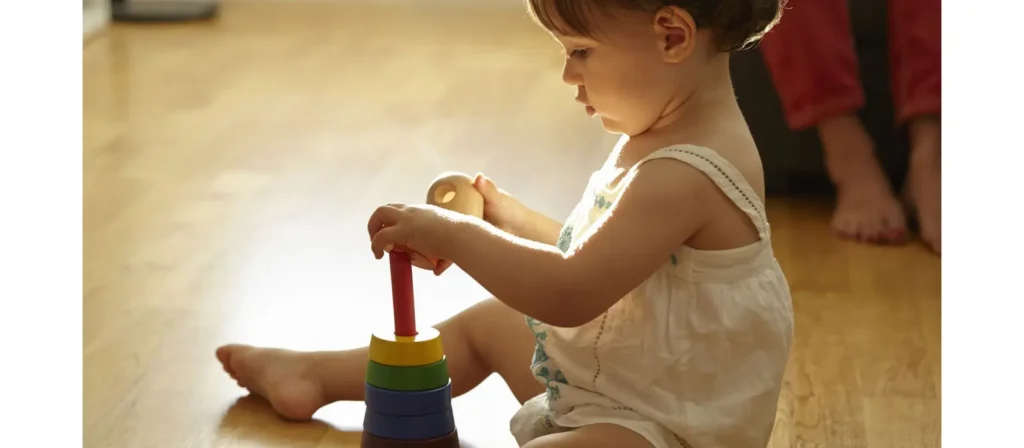
The Brain Develops Most Rapidly in Early Childhood
Between birth and age five, a child’s brain experiences its most rapid period of growth. During this time, more than a million neural connections are formed every second. These connections are the foundation for language, memory, attention, and problem-solving. Missing this window means missing a time when the brain is most flexible and primed for learning.
Early Experiences Shape Lifelong Learning Potential
What children see, hear, and do during early childhood has a direct impact on how they understand and process the world. Reading books, exploring nature, engaging in imaginative play, and having meaningful conversations all stimulate cognitive pathways. These experiences build curiosity, resilience, and a love of learning that carries into adulthood.
Timely Support Helps Identify and Address Delays
Early attention allows parents and educators to notice signs of cognitive developmental delays or differences in learning style. If concerns like speech delays, difficulty concentrating, or memory issues are detected early, interventions can begin at a time when they are most effective. This reduces the risk of academic struggles later on and increases a child’s confidence and ability to thrive.
Parents and Educators Become Proactive, Not Reactive
Starting early empowers adults to act intentionally rather than reactively. When caregivers understand how cognitive development unfolds, they can create environments that challenge and support children before problems arise. This proactive mindset fosters confidence, strengthens the adult-child bond, and allows for consistent, supportive learning.
Earlier Investment Yields Stronger, More Lasting Outcomes
The earlier we nurture cognitive development, the more deeply skills become embedded. Whether it’s building vocabulary, learning to regulate attention, or forming cause-and-effect understanding, skills learned early tend to stick. Children exposed to quality cognitive stimulation in their first five years typically retain and build on those skills far better than those who receive similar input later.
It Prevents the Need for Costly Remediation
Waiting to support cognitive skills until school age can result in the need for remedial education or behavioral interventions. Early attention often minimizes or entirely prevents the gap between what a child can do and what is expected of them academically and socially. Prevention, in this case, is not only more effective—it’s also more economical for families and educational systems.
Developmental Trajectories Are Shaped Early
By age three, a child’s cognitive developmental trajectory—whether typical, advanced, or delayed—is already forming. Early experiences reinforce patterns in thinking, attention, and interaction. When support is delayed, it becomes harder to alter those patterns. But with early guidance, children are far more likely to follow a positive developmental path with fewer obstacles ahead.
Parents and Educators Become Proactive, Not Reactive
Starting early empowers adults to act intentionally rather than reactively. When caregivers understand how cognitive development unfolds, they can create environments that challenge and support children before problems arise. This proactive mindset fosters confidence, strengthens the adult-child bond, and allows for consistent, supportive learning.
Theoretical Foundations of Cognitive Development
Understanding cognitive development isn’t just about observing behaviors—it’s also about understanding the why behind them. Several influential theories have shaped how we view and support cognitive growth in children. Below are some of the most foundational frameworks used in education, psychology, and parenting today.
Piaget’s Theory of Cognitive Development
Jean Piaget’s groundbreaking theory proposed that children progress through four universal stages of cognitive development, each marking a new way of thinking and understanding the world. These stages are not merely age markers—they represent fundamental changes in how children learn, solve problems, and interpret their surroundings.
Sensorimotor Stage: Birth to 2 Years
This is the first stage of cognitive development, where infants learn primarily through their senses and actions. During this time, babies begin to coordinate sensory input with motor responses. They discover that their actions can produce effects (e.g., crying leads to attention), and they gradually understand that objects exist even when they’re not seen (object permanence). Learning is grounded in direct physical experience.
Characteristics and Developmental Changes:
- Infants learn primarily through sensory experiences and motor activities.
- They explore the world using their senses—touching, seeing, hearing, tasting, and moving.
- The concept of object permanence—the understanding that objects exist even when not visible—emerges around 8 to 12 months.
- By the end of this stage, infants begin to develop simple cause-and-effect reasoning (e.g., shaking a rattle makes noise).
- Goal-directed actions appear, and the use of imitation becomes a significant learning tool.
Preoperational Stage: Ages 2 to 7
In this stage, children start to engage in symbolic play and learn to manipulate symbols, but they don’t yet understand concrete logic. Their thinking is intuitive and heavily influenced by how things appear. They can use language effectively, imagine scenarios, and begin to form mental representations of the world. However, their understanding is still egocentric—they struggle to take another person’s point of view.
Characteristics and Developmental Changes:
- Symbolic thinking grows—children use words, images, and drawings to represent objects and experiences.
- They engage in pretend play and can imagine objects and scenarios not physically present.
- Thinking is egocentric—they have difficulty seeing situations from others’ perspectives.
- Children struggle with conservation tasks, meaning they don’t yet understand that quantity remains the same despite changes in shape or arrangement.
- While intuitive, their thinking lacks logic and is influenced by perception more than reason.
Concrete Operational Stage: Ages 7 to 11
Children in this stage become capable of logical thought about concrete objects and events. They understand principles like conservation, reversibility, and cause-and-effect in practical situations. Their thinking becomes more organized and systematic, but is still tied closely to tangible and observable items or experiences. They start to grasp relationships between categories and sequences.
Characteristics and Developmental Changes:
- Children begin to think logically about concrete events and understand concepts such as time, space, and quantity more accurately.
- They master conservation, classification, and seriation (the ability to order objects by size, number, etc.).
- Egocentrism declines—they can understand different points of view.
- Abstract thinking is still limited, but reasoning based on real, tangible situations becomes stronger.
- They can perform mental operations, like reversing steps or imagining what would happen if something changes.
Formal Operational Stage: Ages 12 and Up
The final stage introduces abstract thinking and hypothetical reasoning. Adolescents can now engage in deductive logic, plan for the future, and think about moral, philosophical, and social issues. They are capable of scientific reasoning and systematic problem-solving. This stage represents a shift from concrete operations to more advanced and flexible ways of thinking.
Characteristics and Developmental Changes:
- Abstract, hypothetical, and deductive reasoning skills develop significantly.
- Teenagers begin to consider possibilities, moral reasoning, and future-oriented thinking.
- They can test hypotheses and think systematically about potential solutions.
- This stage introduces metacognition—the ability to think about one’s thought processes.
- Complex problem-solving and philosophical reasoning become possible.
Vygotsky’s Theory of Cognitive Development
Lev Vygotsky, a Russian psychologist and contemporary of Piaget, offered a contrasting view of cognitive development—one that emphasized the profound role of social interaction, culture, and language. While Piaget focused on how children independently construct knowledge, Vygotsky argued that learning is fundamentally a social process, deeply influenced by interaction with more knowledgeable others.
Zone of Proximal Development (ZPD)
The ZPD refers to the range of tasks a child cannot yet perform independently but can accomplish with guidance or collaboration. In simpler terms, it’s the “sweet spot” for learning, where a task is just challenging enough to push the child’s cognitive growth without overwhelming them.
For example, a child might struggle to solve a puzzle alone but succeed when an adult offers hints or prompts. Over time, as the child practices and builds confidence, they can complete similar tasks independently.
Scaffolding
Scaffolding is the process by which a teacher, parent, or peer provides temporary support to help a child master a task within their ZPD. This support can take many forms: asking guiding questions, modeling behavior, breaking down steps, or offering verbal encouragement. As the child becomes more competent, the support is gradually reduced, similar to how scaffolding is removed from a building once it stands on its own.
Effective scaffolding is responsive—it adjusts to the learner’s needs and challenges them just enough to promote growth. This makes learning both achievable and engaging.
The Role of Language in Thought Development
Vygotsky viewed language not just as a communication tool but as the primary driver of cognitive development. He proposed that children first use “social speech” (communication with others), which gradually becomes “private speech” (talking to oneself), and eventually evolves into inner speech—the silent internal dialogue we use for thinking and problem-solving.
Children often talk aloud to guide their actions, especially during difficult tasks. This self-talk reflects internal thinking processes and helps organize behavior. Encouraging such verbal thinking supports the development of reasoning and self-regulation.
Cultural and Social Context Matters
Unlike Piaget’s universal stages, Vygotsky emphasized that cognitive development varies across cultures and environments. Children learn what their culture values, and their development is shaped by the tools (like language, symbols, and traditions) available in their society. Thus, learning is not isolated—it’s embedded in the child’s social and cultural world.
Information Processing Theory
The Information Processing Theory of cognitive development draws an analogy between the human mind and a computer system. Rather than emphasizing stages of cognitive development (like Piaget), this theory focuses on how children acquire, process, store, and retrieve information over time. It views cognitive growth as a continuous, gradual improvement in mental functions such as attention, memory, and problem-solving.
1. Attention
Attention is the gateway to learning. Young children develop the ability to focus selectively on relevant stimuli and filter out distractions. This capacity improves with age, allowing for deeper learning and better task persistence.
- Sustained attention increases notably between the ages of 3 and 7.
- Children learn to shift attention between tasks (cognitive flexibility), especially in structured learning environments.
- Perception—the interpretation of sensory input—also matures, enabling better recognition and categorization of information.
2. Memory
Memory is central to information processing. It is typically divided into three systems:
- Sensory Memory: Briefly holds sensory information (e.g., visual, auditory) for less than a second.
- Short-Term (Working) Memory: Temporarily stores and manipulates information; limited capacity (typically 5–7 items).
- Long-Term Memory: Stores information indefinitely. Young children gradually build mental schemas that help them encode and recall knowledge more efficiently.
Repetition, meaningful connections, and emotional engagement improve memory consolidation in early childhood.
3. Processing Speed
Processing speed refers to how quickly children can interpret and respond to information. This improves as neural connections become more efficient with age and experience.
- Faster processing allows for quicker decision-making and learning.
- It plays a role in reading fluency, math calculations, and multi-step instructions.
Children with slower processing speeds may understand concepts but struggle with timed tasks or complex instructions.
4. Executive Function Skills
Executive function encompasses higher-level thinking processes used for goal-directed behavior. Key components include:
- Inhibitory control: The ability to resist distractions and control impulses
- Cognitive flexibility: The capacity to shift between tasks or perspectives
- Working memory: Holding and manipulating information for short-term tasks
- Planning and organization: Setting goals, predicting outcomes, and completing multi-step activities
Strong executive function is associated with better academic performance, social behavior, and emotional regulation.
5. Educational Implications
Information processing theory has practical applications in early childhood education:
- Scaffold learning tasks to match children’s working memory capacities
- Use repetition and visual aids to reinforce long-term memory
- Teach metacognition (thinking about one’s thinking) to help children reflect on their learning process
- Break tasks into manageable steps and allow extra processing time when needed
By understanding the mechanics of how young minds process information, educators and parents can better support each child’s unique cognitive growth.
Comparing Theories: Key Differences
| وجه | Piaget | Vygotsky | Information Processing |
|---|---|---|---|
| View of Learning | Self-driven, stage-based | Socially constructed, guided | Continuous mental processing |
| Role of Language | Emerges from thought | Central to thinking | Tool for information encoding |
| Role of Adults | Minimal in early stages | Crucial for scaffolding | Provide input and structure |
| Emphasis | Stages of reasoning | Social and cultural context | Specific mental functions |
Cognitive Developmental Milestones
Tracking cognitive development through specific milestones helps parents, educators, and health professionals recognize whether a child is progressing as expected. While every child develops at their own pace, the following age-based benchmarks provide a general guide to typical cognitive growth in early childhood and beyond.
Birth to 6 Months
In the earliest months, infants begin exploring the world primarily through their senses. Their brains are forming basic associations and responding to environmental cues.
- Explores the world using senses (touching, mouthing, listening)
- Begins to recognize familiar faces and voices
- Shows interest in objects and tracks them visually
- Responds to cause and effect (e.g., shaking a rattle makes noise)
- Starts to develop object permanence

6 to 12 Months
As mobility increases, infants become more active learners. They begin forming stronger memory connections and show curiosity in manipulating objects.
- Understands simple words like “no” or their name
- Begins to imitate sounds, actions, and facial expressions
- Explores objects by banging, dropping, and throwing
- Anticipates events (e.g., gets excited when the bottle is seen)
- Looks for hidden objects (stronger sense of object permanence)

1 to 2 Years
Toddlers begin to connect language with actions. They start following instructions, naming familiar things, and imitating adult behaviors more purposefully.
- Follows simple one-step instructions
- Points to objects when named
- Engages in simple pretend play (e.g., feeding a doll)
- Begins sorting shapes and colors
- Recognize themselves in mirrors and photos
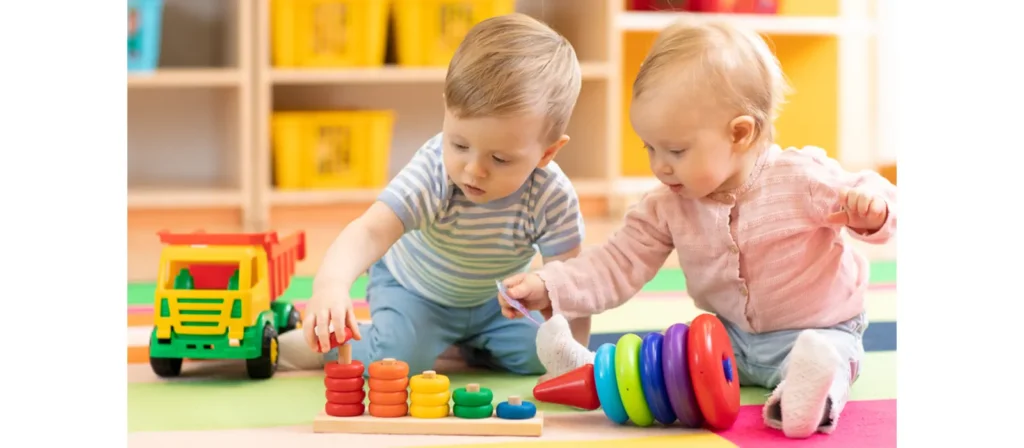
2 to 3 Years
Children enter a period of rapid language development and curiosity. Their thinking is symbolic, and they engage more deeply in imaginative and classification tasks.
- Uses imagination to play and recreate scenarios
- Understands the concept of “two” and begins to count
- Answers simple questions and begins to ask “why”
- Understands time-related concepts like “soon” or “later”
- Matches objects by function or category
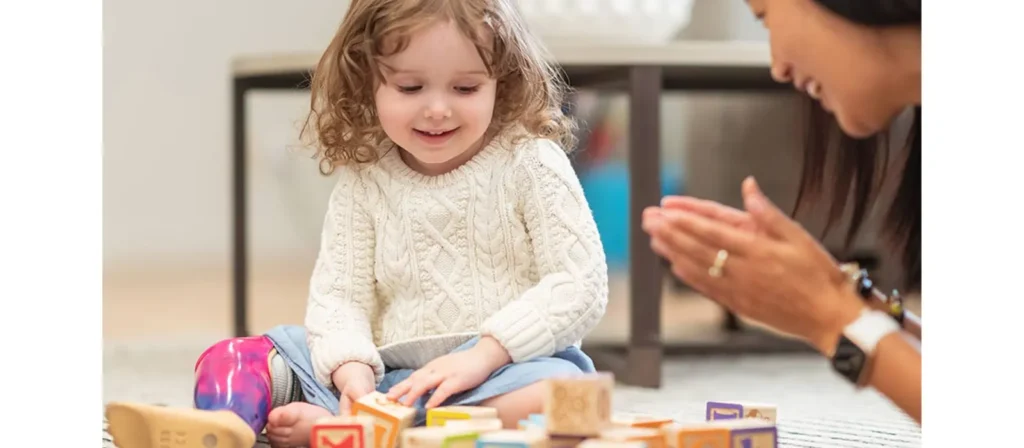
3 to 4 Years
Preschoolers begin to think more logically, organize thoughts into stories, and grasp relationships between objects and events. Their play becomes more complex and socially interactive.
- Can retell parts of a story and understands basic plots
- Knows names of familiar colors and some numbers
- Understands the difference between “same” and “different”
- Engages in complex pretend play with rules and roles
- Begins to grasp concepts of time (yesterday, today, tomorrow)
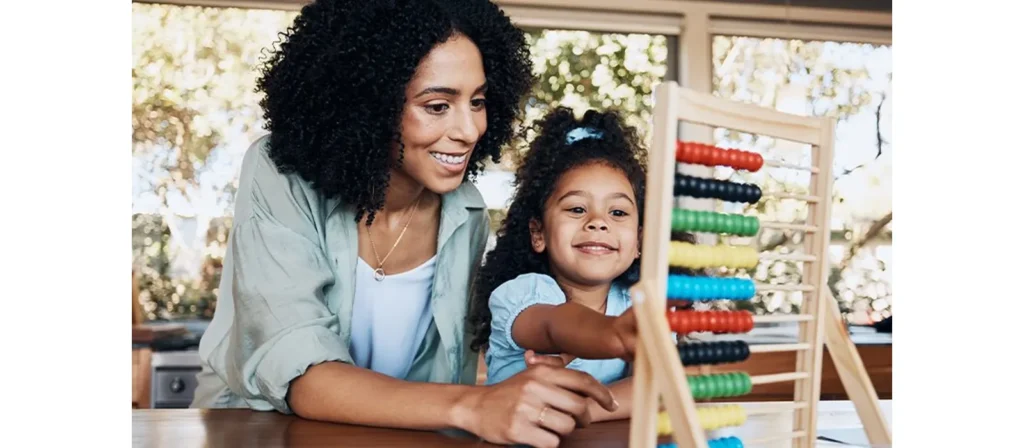
4 to 5 Years
Children at this stage show better memory, reasoning, and curiosity about rules and fairness. They enjoy solving problems and are preparing for structured learning.
- Can count accurately to 10 or higher
- Understands the concept of “more” or “less”
- Identifies and solves simple problems
- Understands basic reasoning and starts to ask “what if” questions
- Knows full name, age, and some personal details

5 to 6 Years
As school approaches, children’s thinking becomes more goal-oriented and organized. They begin understanding abstract concepts and learning strategies.
- Follows multi-step directions
- Recognizes some written words and understands letter-sound relationships
- Begins to understand the concept of fairness and rules
- Uses strategies to remember (e.g., songs, visual cues)
- Shows interest in cause-and-effect and logical reasoning

6 to 8 Years
In early elementary years, cognitive skills expand rapidly. Children begin applying knowledge independently and can reflect on their thoughts and decisions.
- Reads and writes independently
- Understands abstract concepts like money and time more fully
- Begins to plan ahead and organize thoughts
- Grasps more complex math ideas (e.g., addition, subtraction)
- Applies past experiences to new situations

How to Support Cognitive Development?
Supporting cognitive development in early childhood doesn’t require expensive tools or rigid lessons—it’s about creating rich, responsive environments that challenge the mind while nurturing curiosity. Whether at home or in the classroom, simple daily interactions can significantly influence how children think, reason, and learn.
At Home: Strategies for Parents
The home environment plays a foundational role in shaping a child’s cognitive growth. Children don’t need expensive tools or formal lessons to learn. They need time, attention, and a space where thinking is encouraged and supported naturally.
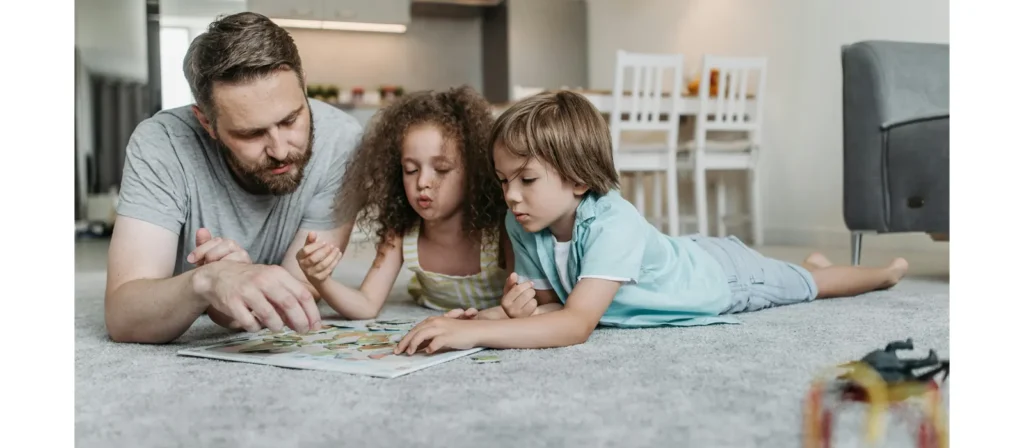
Talk Constantly and Listen Actively
Conversational interaction, even with very young children, helps build the foundation for language, memory, and logical thinking. Children begin to associate sounds with meaning and learn how to organize and express their thoughts. Speaking regularly expands vocabulary and improves comprehension. Active listening shows children that their ideas matter, encouraging further communication.
- Use descriptive language when going about daily routines.
- Ask open-ended questions that encourage thinking (“Why do you think that happened?”).
- Practice active listening to build communication and comprehension skills.
Read Together Every Day
Reading aloud supports vocabulary growth, memory, and imagination while introducing children to story structure and sequence. It strengthens listening skills and helps children learn to follow ideas across time. Asking questions during reading builds comprehension and critical thinking. Regular shared reading also deepens emotional bonds and attention span.
- Choose age-appropriate books with engaging visuals and language.
- Pause to ask questions and make predictions.
- Discuss story elements and encourage your child to retell stories in their own words.
Provide Open-Ended Play Opportunities
Open-ended play encourages exploration, decision-making, and creative problem-solving. When children use materials without fixed outcomes, they develop flexible thinking and independence. Activities like building, role-playing, or drawing support planning and spatial awareness. Such play also promotes persistence when facing small challenges.
- Offer toys like building blocks, art supplies, and pretend play sets.
- Avoid overstimulating electronic toys with limited interaction.
- Rotate toys to maintain novelty and challenge.
Involve Children in Daily Routines
Every day tasks offer real-life opportunities to build logic, sequencing, and responsibility. Sorting laundry, setting the table, or organizing groceries teaches categorization and counting. These routines help children understand order and cause-and-effect relationships. Including them builds confidence and a sense of contribution.
- Let them measure ingredients, sort laundry by color, or help with grocery lists.
- Encourage decision-making by offering choices during routines.
- Narrate each step to reinforce sequencing and vocabulary.
Encourage Curiosity and Exploration
Children learn best when they are curious and allowed to explore their environment freely. Encouraging questions, observations, and experiments fosters critical thinking. Nature walks, hands-on materials, and simple science tasks promote investigation. Supporting curiosity builds a strong foundation for independent learning.
- Take walks in nature and talk about what you see.
- Allow children to experiment—even if it’s messy.
- Support their interests with books, materials, and experiences.
لا تحلم فقط، بل صممه! دعنا نتحدث عن احتياجاتك من الأثاث المخصص!
In the Classroom: Strategies for Educators
Teachers play a critical role in shaping how children think, learn, and explore. A well-designed classroom experience can enhance children’s cognitive growth by encouraging reasoning, attention, memory, and social thinking. Through purposeful interaction and hands-on engagement, educators can help children build strong mental foundations that benefit them for life.
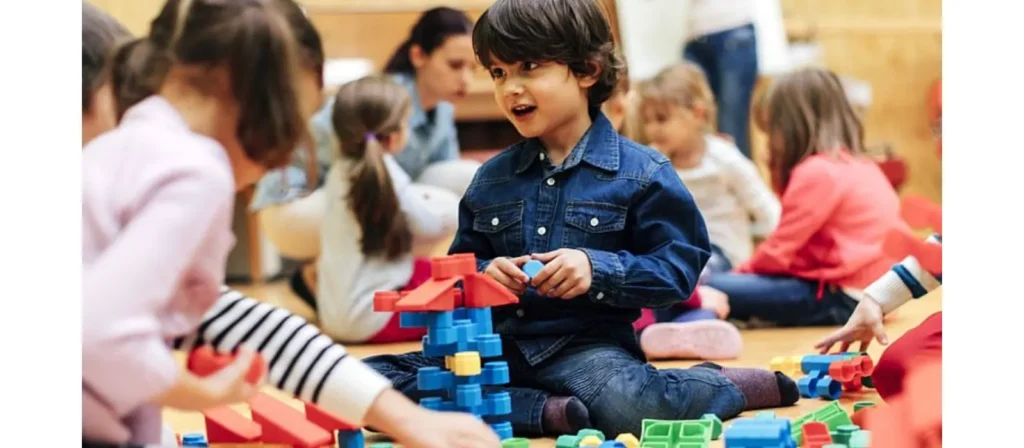
Use Play-Based Learning
Play is a central pathway to cognitive development in early childhood classrooms. Through imaginative and structured play, children practice reasoning, memory, and symbolic thinking. Activities like building, pretend play, or sensory stations enhance understanding through experience. Learning becomes deeper when it feels meaningful and self-directed.
- Set up learning centers focused on science, math, literacy, and art.
- Encourage pretend play and collaborative activities.
- Use real-life scenarios to build reasoning and critical thinking.
Encourage Problem-Solving and Critical Thinking
Children learn to think logically when they’re given the chance to face challenges and find solutions. Presenting questions without immediate answers promotes independent thinking. Teachers can support this by guiding rather than directing. Over time, children gain confidence in their ability to reason and reflect.
- Present challenges or puzzles without immediately offering solutions.
- Ask guiding questions instead of giving answers.
- Celebrate effort and strategies rather than just outcomes.
Incorporate Hands-On, Multi-Sensory Activities
Using touch, movement, sound, and visuals strengthens memory and deepens understanding. Manipulatives, textured materials, and real-life tools turn abstract ideas into concrete experiences. These activities also improve focus and processing. Multi-sensory learning helps reach children with different learning styles and needs.
- Use manipulatives, textures, and interactive visuals.
- Let children explore materials before explaining them.
- Include movement, music, and role-play in lessons.
Build a Language-Rich Environment
A classroom filled with meaningful language supports communication and thought development. Labeling items, narrating routines, and encouraging group discussion expand vocabulary and comprehension. Storytelling and conversation promote language use in context. Rich verbal input helps children connect ideas and express themselves clearly.
- Label classroom items and use consistent vocabulary.
- Engage in group discussions and storytelling.
- Introduce new words in meaningful contexts.
Observe and Scaffold
Careful observation helps educators understand where each child is developmentally. Scaffolding provides just enough support to help children complete a task they can’t yet do alone. As children grow more capable, the support is gradually removed. This tailored approach builds independence and sustained learning.
- Regularly observe each child’s strengths and challenges.
- Provide just enough support to help them succeed, then gradually reduce it.
- Create individualized plans or activities based on developmental needs.
10 Activities to Promote Cognitive Development
Engaging children in thoughtful, well-designed activities can significantly enhance their cognitive development. These experiences stimulate memory, attention, language, reasoning, and problem-solving skills—all while keeping learning fun and developmentally appropriate. Below are 10 effective activities that support early cognitive development in both home and classroom settings.
1. Storytelling and Retelling
Activity Overview: Children listen to a story, then retell it using their own words, drawings, or props. This activity encourages them to recall details, understand sequence, and express ideas. It can be done with books, oral stories, or picture prompts.
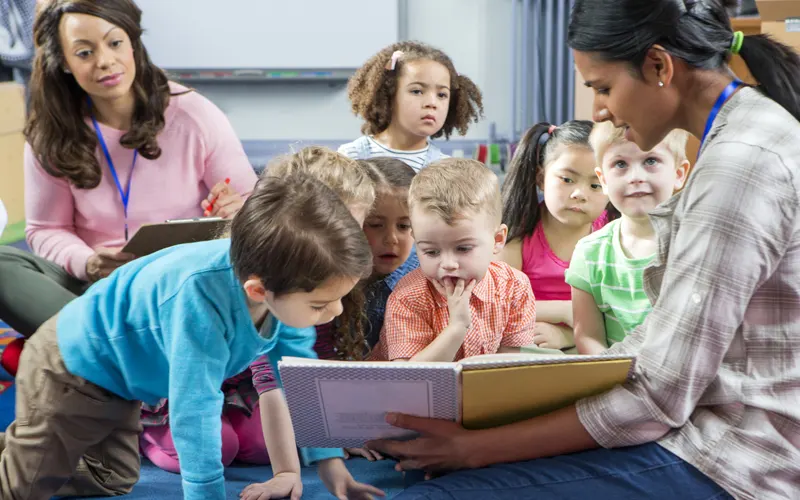
مواد:
- Picture books or short storybooks
- Puppets or soft toys (optional)
- Paper and crayons (optional for story drawing)
Steps:
- Read a short story aloud with an expressive tone and gestures.
- Ask your child to retell the story using words, drawings, or props.
- Encourage discussion about characters, what happened first/next/last, and their favorite part.
- Re-read the story or try retelling it from another character’s perspective.
Educational Value:
- Enhances memory and sequencing
- Builds expressive and receptive language skills
- Strengthens comprehension and vocabulary
- Promotes creativity and symbolic thinking
2. Puzzle Play
Activity Overview: Children complete puzzles by fitting pieces into correct positions based on shape, color, or image. This hands-on task helps them analyze parts and wholes, recognize patterns, and build visual reasoning. Difficulty can vary by age.

مواد:
- Jigsaw puzzles (age-appropriate)
- Tangrams or shape sorters
- Puzzle boards (optional)
Steps:
- Choose a puzzle suitable for your child’s age and ability.
- Allow the child to examine pieces and fit them together freely.
- Offer prompts like “What shape fits here?” or “Try rotating that piece.”
- Upon completion, ask questions about the final image or shapes used.
Educational Value:
- Improves spatial awareness and hand-eye coordination
- Encourages persistence and strategic thinking
- Develops logical reasoning and concentration
- Builds problem-solving confidence
3. Matching and Sorting Games
Activity Overview: Children sort or match objects based on shared features such as color, shape, or size. The activity involves organizing, comparing, and labeling, helping children recognize patterns and make sense of visual information.
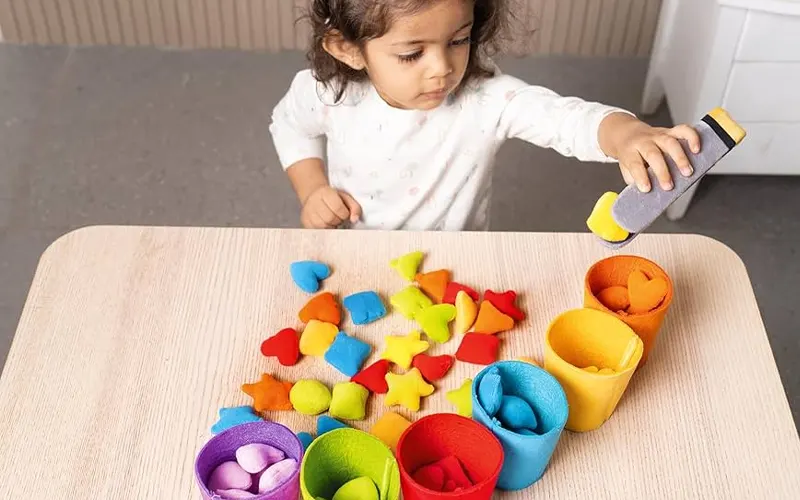
مواد:
- Household items (buttons, blocks, toy animals, socks, etc.)
- Trays or mats for sorting
- Optional tongs or tweezers for the fine motor challenge
Steps:
- Present a collection of assorted items.
- Ask your child to sort them by one characteristic (e.g., color).
- As skills grow, introduce multiple categories or sorting rules.
- Talk through their choices and encourage explanations.
Educational Value:
- Builds early math concepts like grouping and comparing
- Enhances observation and critical thinking
- Expands descriptive vocabulary
- Supports logical categorization and flexible thinking
4. Pretend Play and Role-Playing
Activity Overview: Children engage in imaginary scenarios such as playing house, doctor, or store. They use objects, costumes, or furniture to create roles and act out events. This type of play fosters creativity, symbolic thinking, and social understanding.
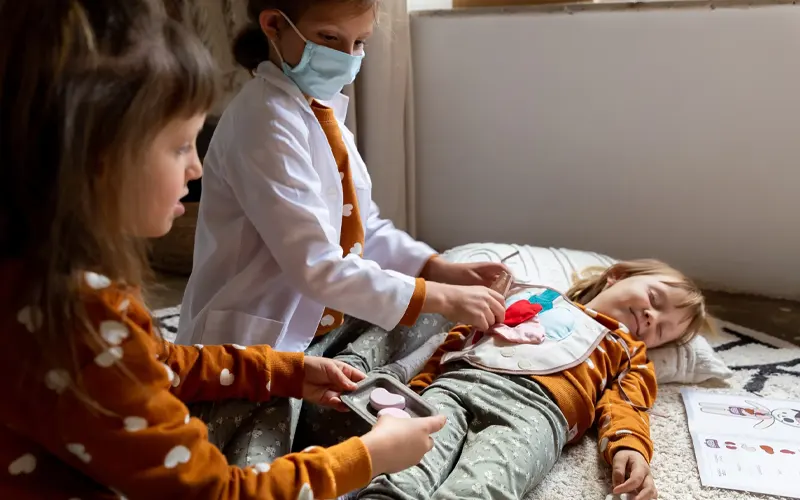
مواد:
- Dress-up clothes or hats
- Toy props (e.g., kitchen set, doctor kit, shopping bag)
- Dolls or stuffed animals (optional)
Steps:
- Set up a simple play scene based on a familiar setting.
- Encourage the child to choose roles and act out routines.
- Ask open-ended questions like “What happens next?” or “How does your character feel?”
- Let the child lead while you participate or observe.
Educational Value:
- Supports imagination and symbolic thinking
- Develops storytelling and expressive language
- Encourages empathy and perspective-taking
- Strengthens planning and social negotiation skills
5. Nature Walks with Observation
Activity Overview: This activity involves taking a walk outdoors and encouraging children to observe their surroundings. Children look, listen, and ask questions about what they see in nature. It promotes curiosity, descriptive language, and early science skills.

مواد:
- Notebook or drawing pad (optional)
- Crayons or pencils
- Magnifying glass or container for collecting (optional)
مواد:
- Notebook or drawing pad (optional)
- Crayons or pencils
- Magnifying glass or container for collecting (optional)
Steps:
- Take a walk in a park, garden, or neighborhood with your child.
- Encourage them to observe plants, animals, textures, and sounds.
- Ask guiding questions like “What do you think that is?” or “Why does this look different?”
- Draw or talk about the observations afterward.
Educational Value:
- Builds observation and questioning skills
- Enhances vocabulary related to nature
- Encourages a connection between the child and the environment
- Lays the foundation for scientific thinking
6. Memory Games
Activity Overview: Children play games that challenge them to remember objects, sequences, or images. These can be visual or verbal memory tasks that train short-term memory, concentration, and recall in fun and manageable ways.
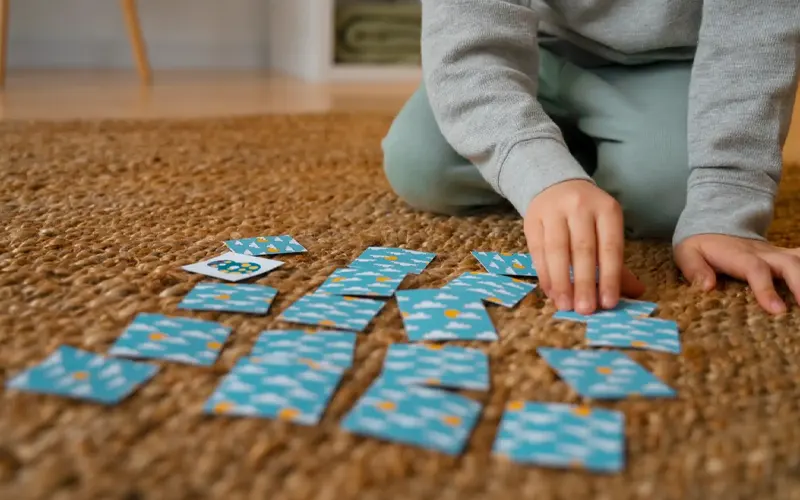
مواد:
- Picture cards (e.g., memory match sets)
- Household objects (for “What’s missing?”)
- Tray and cloth (for covering objects)
Steps:
- Show your child a set of 4–6 objects or cards and let them observe.
- Cover one object or shuffle cards, and ask them what changed or what’s missing.
- Gradually increase difficulty as memory improves.
- Repeat and vary the format to keep it engaging.
Educational Value:
- Improves short-term and working memory
- Strengthens attention and concentration
- Develops comparison and reasoning skills
- Encourages visual and verbal recall
7. Cooking with Adults
Activity Overview: Children help prepare simple recipes alongside an adult, following steps like pouring, stirring, or measuring. This hands-on activity builds sequencing, math skills, and focus through real-life, purposeful actions.

مواد:
- Child-safe cooking tools (measuring cups, spoons, mixing bowl)
- Simple ingredients (e.g., fruit, flour, water)
- Printed or verbal recipe instructions
Steps:
- Choose a simple, safe recipe with 3–5 steps (like fruit salad or pancakes).
- Let the child assist with washing, measuring, and mixing.
- Name ingredients and explain each step as you go.
- After cooking, talk about what changed and taste the result together.
Educational Value:
- Builds sequencing, measurement, and counting skills
- Encourages attention, listening, and cooperation
- Strengthens language through naming and describing
- Promotes confidence and independence
8. Building and Construction Activities
Activity Overview: Children use blocks, bricks, or recycled items to build structures freely or by plan. This activity enhances spatial reasoning, creativity, and understanding of cause and effect as they design and test ideas.
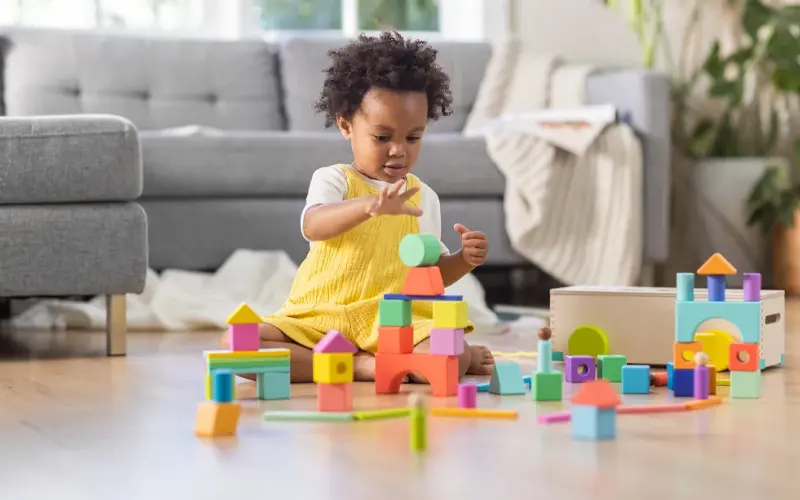
مواد:
- Wooden blocks, LEGO bricks, or magnetic tiles
- Cardboard boxes, cups, or recycled containers
- Paper and pencil for drawing designs (optional)
مواد:
- Wooden blocks, LEGO bricks, or magnetic tiles
- Cardboard boxes, cups, or recycled containers
- Paper and pencil for drawing designs (optional)
Steps:
- Offer a variety of building materials and give open-ended prompts.
- Let the child build freely or follow a challenge (e.g., “Build a bridge”).
- Observe their design process and ask reflective questions.
- Encourage revisions and storytelling about their creation.
Educational Value:
- Develops spatial awareness and design thinking
- Encourages creative problem-solving and experimentation
- Teaches balance, structure, and simple physics
- Supports goal-setting and persistence
9. Simple Science Experiments
Activity Overview: Children perform guided experiments using everyday materials to explore physical changes and reactions. These activities spark curiosity and introduce the basics of observation, prediction, and cause-effect reasoning.
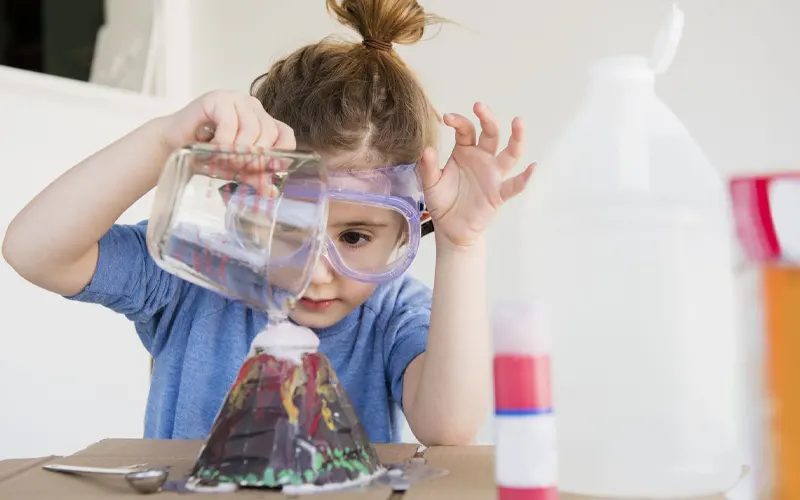
مواد:
- Baking soda, vinegar, food coloring, water, etc.
- Clear cups, spoons, a small tray or a container
- Paper and pencil (optional for drawing or notes)
Steps:
- Choose a simple experiment (e.g., baking soda + vinegar reaction).
- Walk your child through each material and its role.
- Let them pour, mix, and observe while asking, “What do you notice?”
- Encourage predictions and discussion of results.
Educational Value:
- Introduces basic scientific concepts and vocabulary
- Builds observation and critical thinking skills
- Encourages curiosity and experimentation
- Connects play with early science learning
10. Roll and Count Race
Activity Overview: This game combines dice rolling, counting, and turn-taking to strengthen number recognition and executive function. Players take turns rolling a die and moving their marker forward on a homemade track, practicing self-regulation while learning to count with purpose.
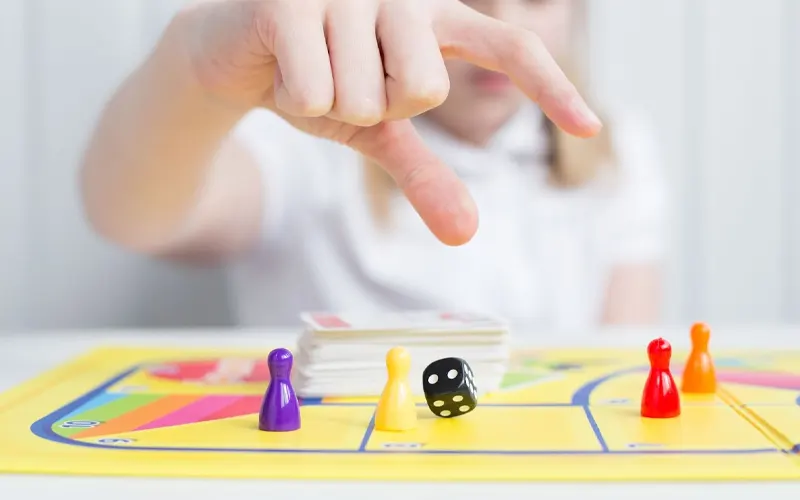
مواد:
- One die (or a spinner with numbers 1–6)
- A simple paper game board with numbered spaces (1–20)
- Small markers (coins, buttons, or toy figures) for each player
Steps:
- Create a basic path of numbered squares on a sheet of paper.
- Each player places a marker at the start and takes turns rolling the die.
- Players count aloud as they move their marker forward.
- The first to reach the finish wins; repeat with encouragement and fairness.
Educational Value:
- Reinforces number recognition and one-to-one counting
- Teaches turn-taking, patience, and rule-following
- Supports working memory and mental flexibility
- Encourages verbal counting and basic game strategy
Toys Enhance Cognitive Development
Toys promote active learning, which is essential for early cognitive development. Through manipulation, experimentation, and pretend play, children refine essential skills like attention, memory, logical reasoning, and language processing. The key is to offer educational toys that are open-ended, age-appropriate, and challenge the mind without causing frustration.



1. Building Blocks
Classic wooden blocks, magnetic tiles, or LEGO-style bricks offer endless possibilities for construction and problem-solving. As children stack, balance, and connect pieces, they learn about spatial relationships, size, symmetry, and gravity. This kind of play nurtures planning, critical thinking, and adaptability when structures fall or designs evolve.
2. Jigsaw Puzzles
Puzzles challenge children to analyze shapes, recognize patterns, and see how parts fit into a whole. Completing a puzzle strengthens attention span, visual memory, and perseverance. Children also practice comparing, predicting, and self-correcting—core skills that support early academic learning.
3. Shape Sorters
Shape sorters teach categorization and early geometry concepts in a hands-on way. Children must match different shapes to their corresponding holes, which boosts their ability to classify, compare, and coordinate hand movements with visual input. This enhances both logic and fine motor development.

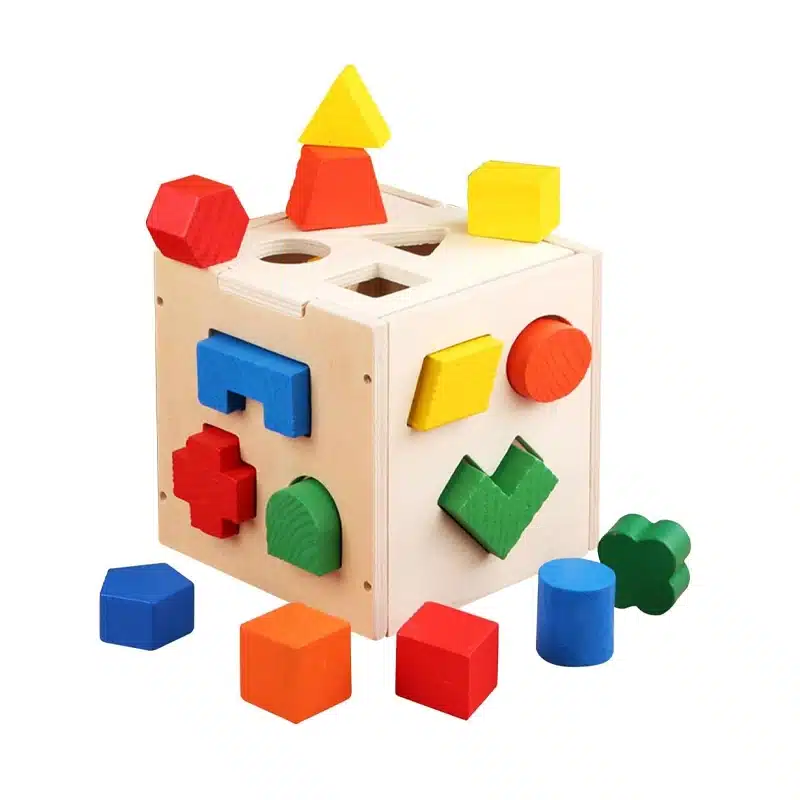
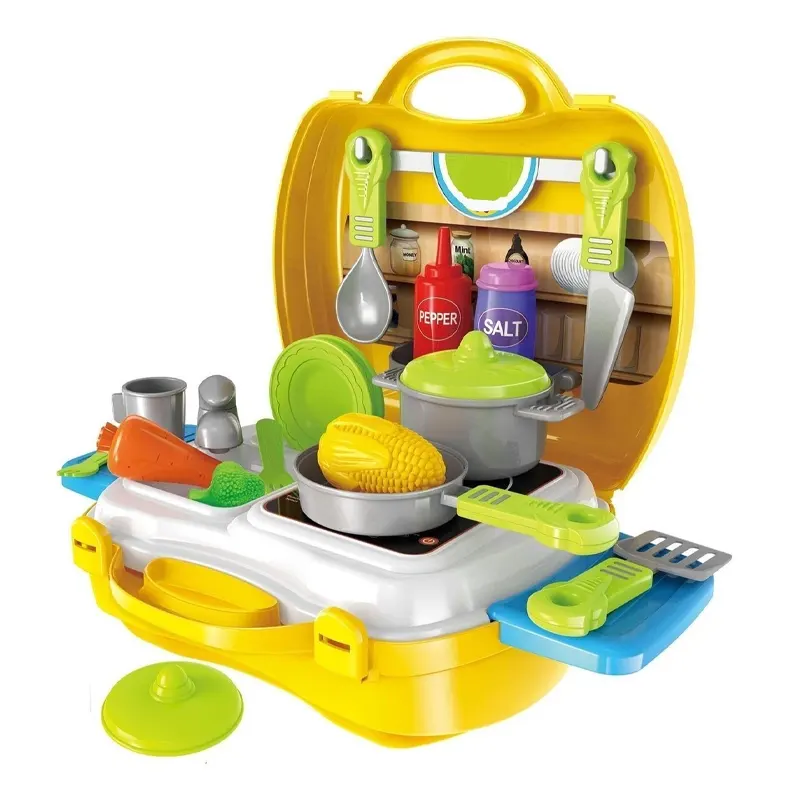
4. Pretend Play Sets
Toys like dollhouses, kitchen sets, or doctor kits foster symbolic thinking and narrative skills. When children take on roles and act out real-life scenarios, they explore cause and effect, learn to sequence events, and build storytelling ability. This type of play also reinforces language development and empathy.
5. Memory Matching Cards
Memory games help children strengthen their working memory and concentration. Flipping cards and trying to remember where matches are located trains visual recall and cognitive flexibility. This improves short-term memory capacity, which is essential for academic readiness.
6. Simple Science Kits
Early science kits—such as magnifying glasses, magnetic wands, or water-based experiments—introduce children to observation, prediction, and cause-and-effect relationships. These activities encourage curiosity and early scientific reasoning in a playful, exploratory setting.

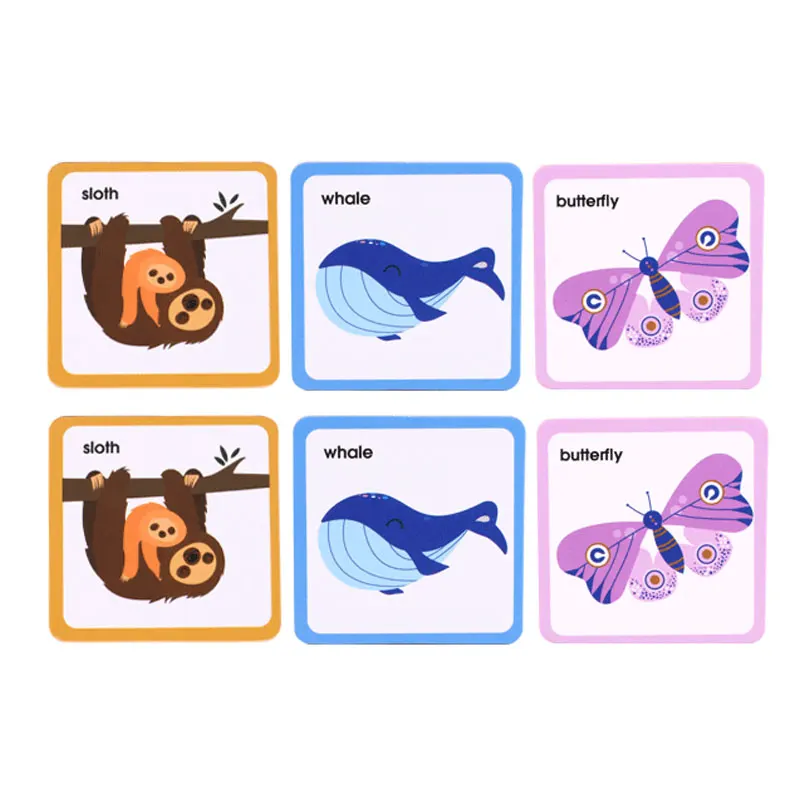
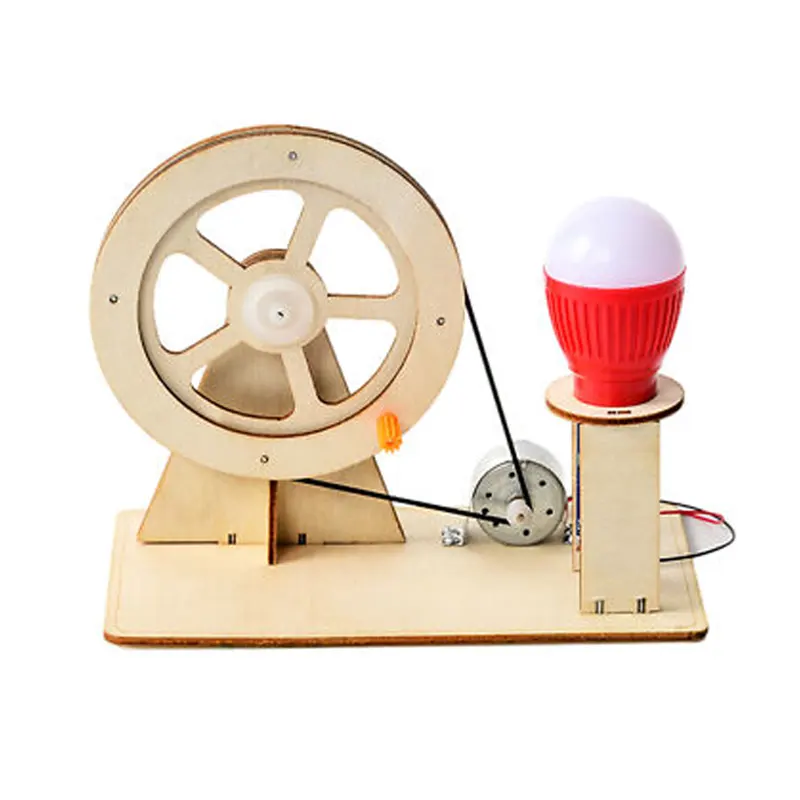
فصلك الدراسي المثالي على بعد نقرة واحدة!
Signs of Cognitive Delays and When to Seek Professional Help
Cognitive development does not follow a perfectly uniform timeline. While some variation is normal, significant or persistent delays may indicate underlying issues that require attention. Understanding how to identify the signs of cognitive delay—and knowing when to seek professional help—can make a meaningful difference in a child’s long-term learning and well-being.
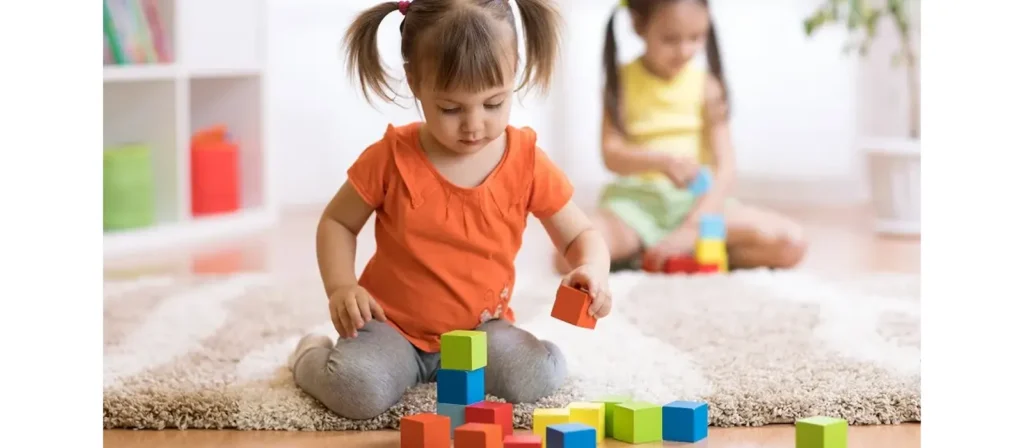
1. Delayed Language and Communication
One of the most common early indicators of cognitive delay is difficulty with language development. A child may use fewer words than expected for their age or have trouble understanding simple directions. By 18 to 24 months, most children begin using clear words, and by age three, they typically form short sentences. If a child struggles to express ideas, follow instructions, or comprehend stories, these may be signs that their cognitive processing of language is lagging behind typical milestones.
2. Problems with Attention and Memory
Children with cognitive delays often have trouble maintaining focus, especially during tasks that require sustained attention. They may become easily distracted, forget recent events, or struggle to follow multi-step directions. Difficulty recalling familiar names, routines, or learning content can point to underdeveloped working memory, which is a core element of cognitive function. These issues may be subtle but persistent and often interfere with everyday activities or learning tasks.
3. Limited Problem-Solving and Reasoning Skills
Cognitive development involves the ability to observe, question, and figure things out. A child who shows little interest in solving puzzles, exploring new activities, or engaging in trial-and-error learning may be displaying early signs of delay. These children may not grasp simple cause-and-effect relationships or become easily frustrated with basic learning challenges. Their thinking may remain very concrete or repetitive, lacking the flexibility expected for their age.
4. Atypical Play and Social Interaction
Play is a powerful window into a child’s cognitive world. Children with delays may engage in limited pretend play or fail to use imagination in expected ways. Instead of experimenting or adapting in social games, they might repeat the same actions or avoid interaction with peers. Difficulty with turn-taking, following simple game rules, or interpreting social cues can suggest underlying delays in processing and applying cognitive information in social contexts.
5. Missed Developmental Milestones and Regression
When a child consistently misses age-appropriate cognitive milestones, such as naming colors by age three or understanding simple time concepts by age five, it may indicate a broader delay. In some cases, children may even lose skills they previously mastered, such as using words they once knew or showing interest in books or problem-solving activities. Such regression should be taken seriously and addressed promptly.
When to Seek Professional Help
Parents and educators should seek professional guidance if multiple signs of cognitive delay are observed over several months or if a child’s development appears to be significantly behind that of peers. Consultation with a pediatrician, child psychologist, or early childhood specialist can lead to formal assessments and, if needed, targeted support services. Early intervention, such as speech therapy, cognitive enrichment programs, or personalized education strategies, can dramatically improve outcomes.
Frequently Asked Questions (FAQs)
- At what age does cognitive development begin?
Cognitive development begins at birth. From the first days of life, babies start processing sensory information and gradually develop memory, recognition, and problem-solving abilities. - What are some signs of strong cognitive development?
Children showing curiosity, asking questions, solving simple problems, remembering past events, and showing an interest in books or puzzles typically demonstrate healthy cognitive development. - When should I worry about cognitive delays?
If a child consistently misses multiple developmental milestones, has difficulty understanding simple instructions, or shows limited interest in exploring or engaging, it may be time to consult a developmental specialist. - Do screen-based activities help or hurt cognitive development?
Screen time should be limited and used mindfully. Interactive and educational content can support learning if guided by adults, but passive or excessive screen use can hinder attention and creativity. - Can playing enhance cognitive development?
Yes, play—especially imaginative and interactive play—is a key driver of cognitive growth. It supports language, memory, reasoning, and social understanding naturally and enjoyably. - Is cognitive development the same for all children?
No, every child develops at their own pace. While there are common milestones, individual differences in temperament, environment, and learning style can influence the rate and style of cognitive growth. - How does language development relate to cognitive growth?
Language is both a tool and a product of cognitive development. As children learn words and grammar, they also enhance memory, reasoning, and the ability to understand abstract ideas. - How do cultural differences impact cognitive development?
Cultural norms and values shape how children learn, communicate, and solve problems. Cognitive development is not one-size-fits-all—it reflects both universal milestones and cultural uniqueness.
خاتمة
Cognitive development in early childhood is a dynamic and powerful process that shapes how children think, learn, and interact with the world. From the first coos of infancy to the critical thinking of early school years, each stage represents a unique opportunity to build essential skills that will last a lifetime.
From the foundational theories of Piaget and Vygotsky to the simple power of play and conversation, we’ve seen how both science and everyday experiences guide cognitive growth. Recognizing milestones, offering age-appropriate challenges, and supporting curiosity are all ways caregivers and educators can make a lasting impact.
Ultimately, the greatest gift we can offer a developing mind is opportunity—the chance to explore, to question, and to be understood. With informed guidance and responsive care, every child can thrive cognitively and grow into a confident, capable thinker prepared for the world ahead.


